Brant: At Mt. Ida
Annotations
On the right is a small hill labeled Mount Ida, and at the top of the image, Troy and Antandros stand next to each other. The city of Antandros is supposed to be across the mountain from Troy (5-6). Aeneas stands in front of the mountain surrounded by fellow refugees holding shipbuilding tools, directing them in the building of a fleet. So far, one ship is almost built, with one piece left to put on it, and sailors inside it ready to sail off. The other is still a pile of lumber. Behind Aeneas, Anchises urges the people to ready the fleet to sail once the summer has arrived (8-9). (Katy Purington)
Woodcut illustration from the “Strasbourg Vergil,” edited by Sebastian Brant: Publii Virgilii Maronis Opera cum quinque vulgatis commentariis expolitissimisque figuris atque imaginibus nuper per Sebastianum Brant superadditis (Strasbourg: Johannis Grieninger, 1502), fol. 183v, executed by an anonymous engraver under the direction of Brant.




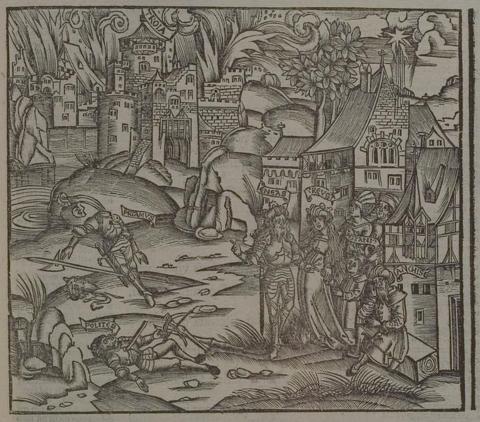
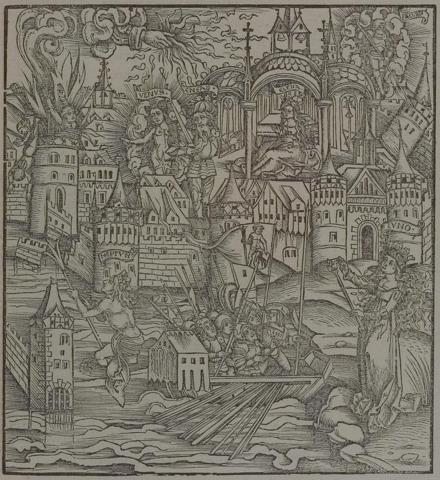
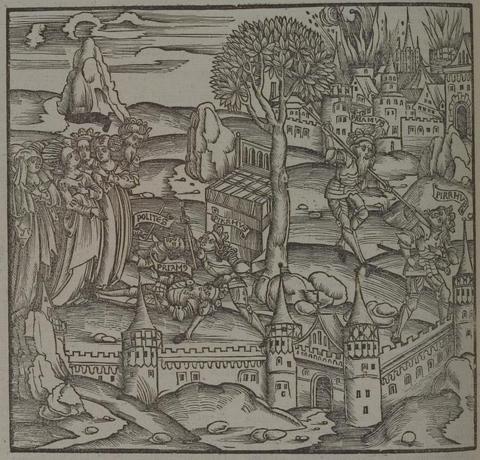

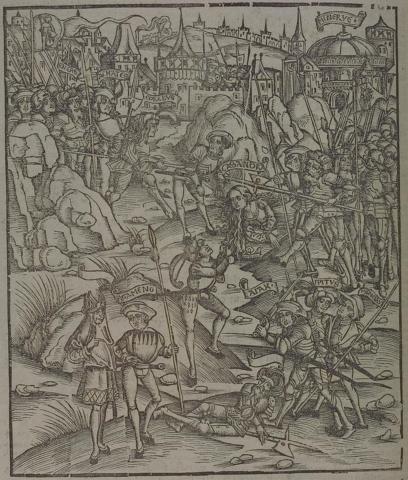
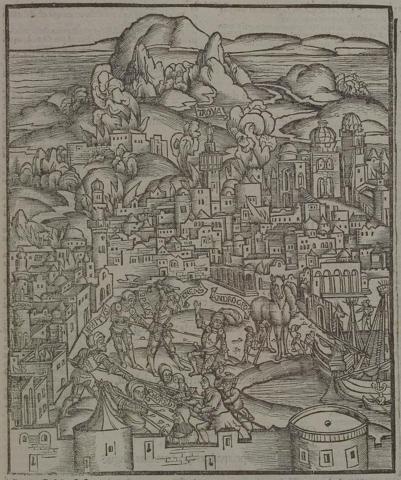

Sebastian Brant (1458–1521) was a humanist scholar of many competencies. Trained in classics and law at the University of Basel, Brant later lectured in jurisprudence there and practiced law in his native city of Strasbourg. While his satirical poem Das Narrenschiff won him considerable standing as a writer, his role in the transmission of Virgil to the Renaissance was at least as important. In 1502 he and Strasbourg printer Johannes Grüninger produced a major edition of Virgil’s works, along with Donatus’ Life and the commentaries of Servius, Landino, and Calderini, with more than two hundred woodcut illustrations. (Annabel Patterson)